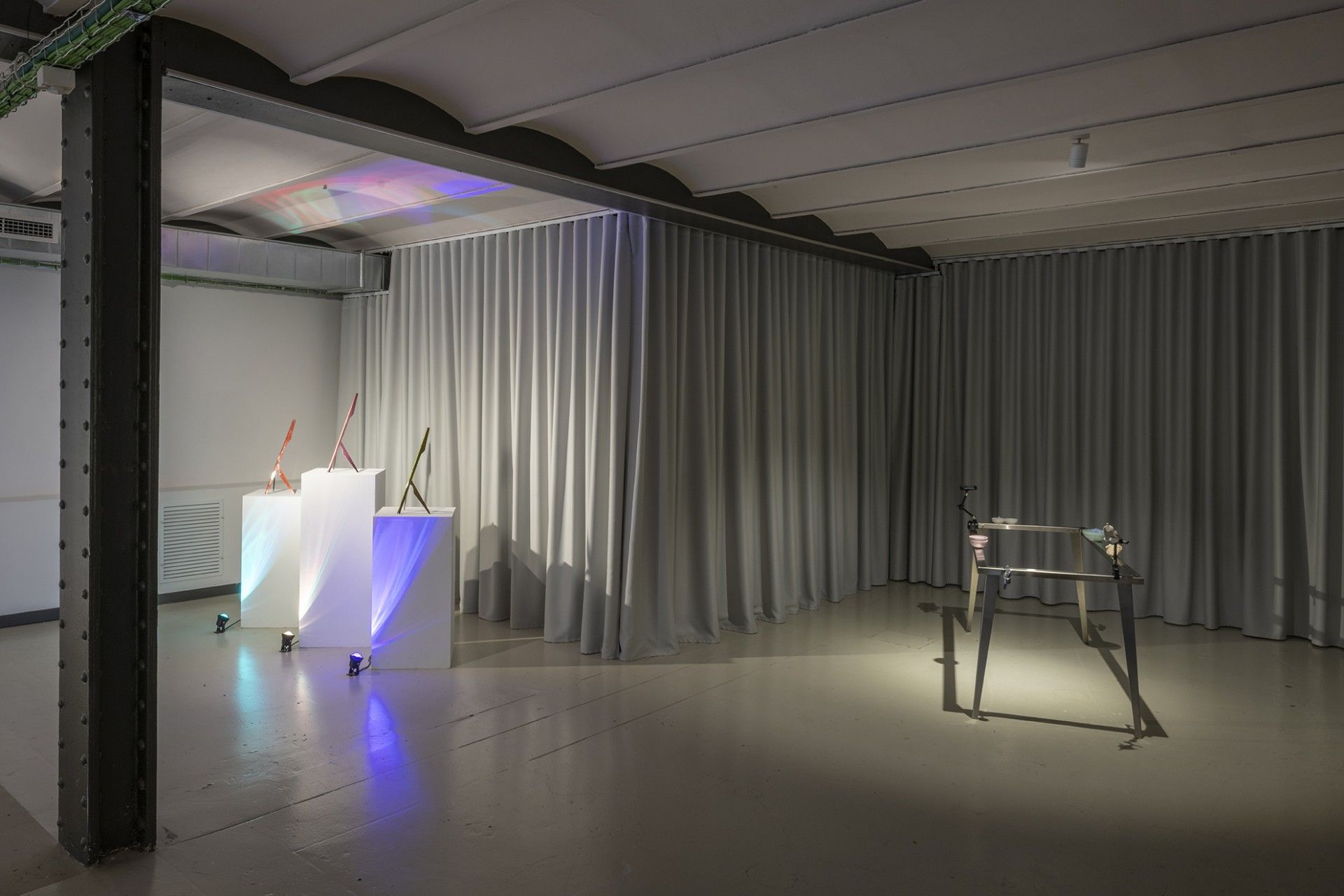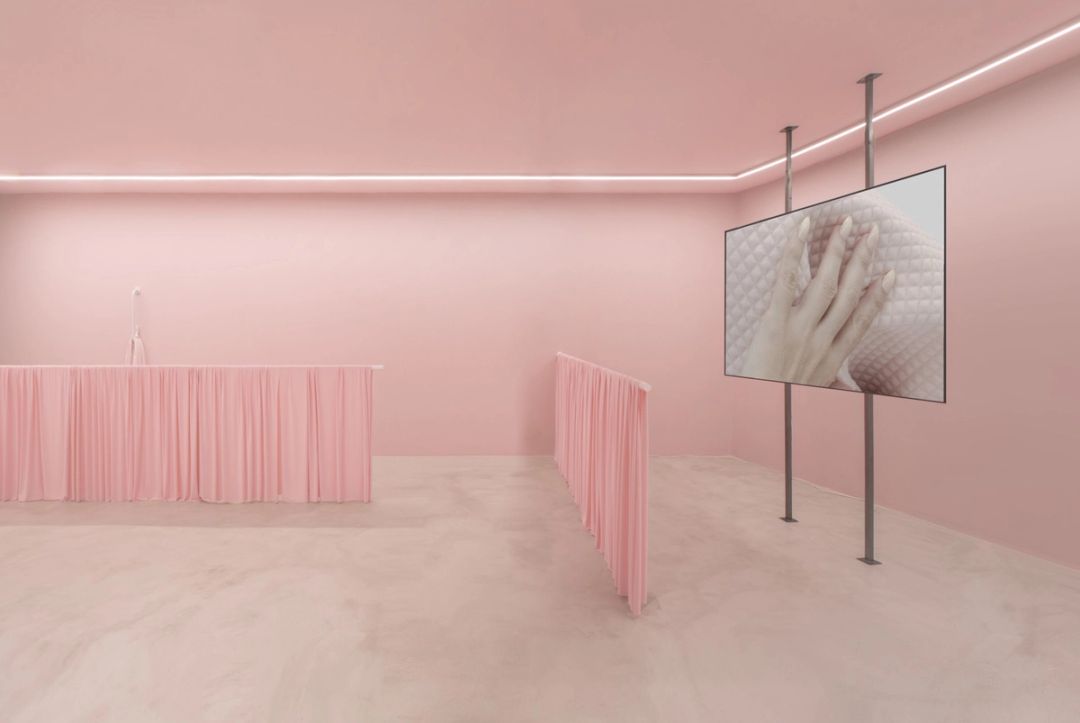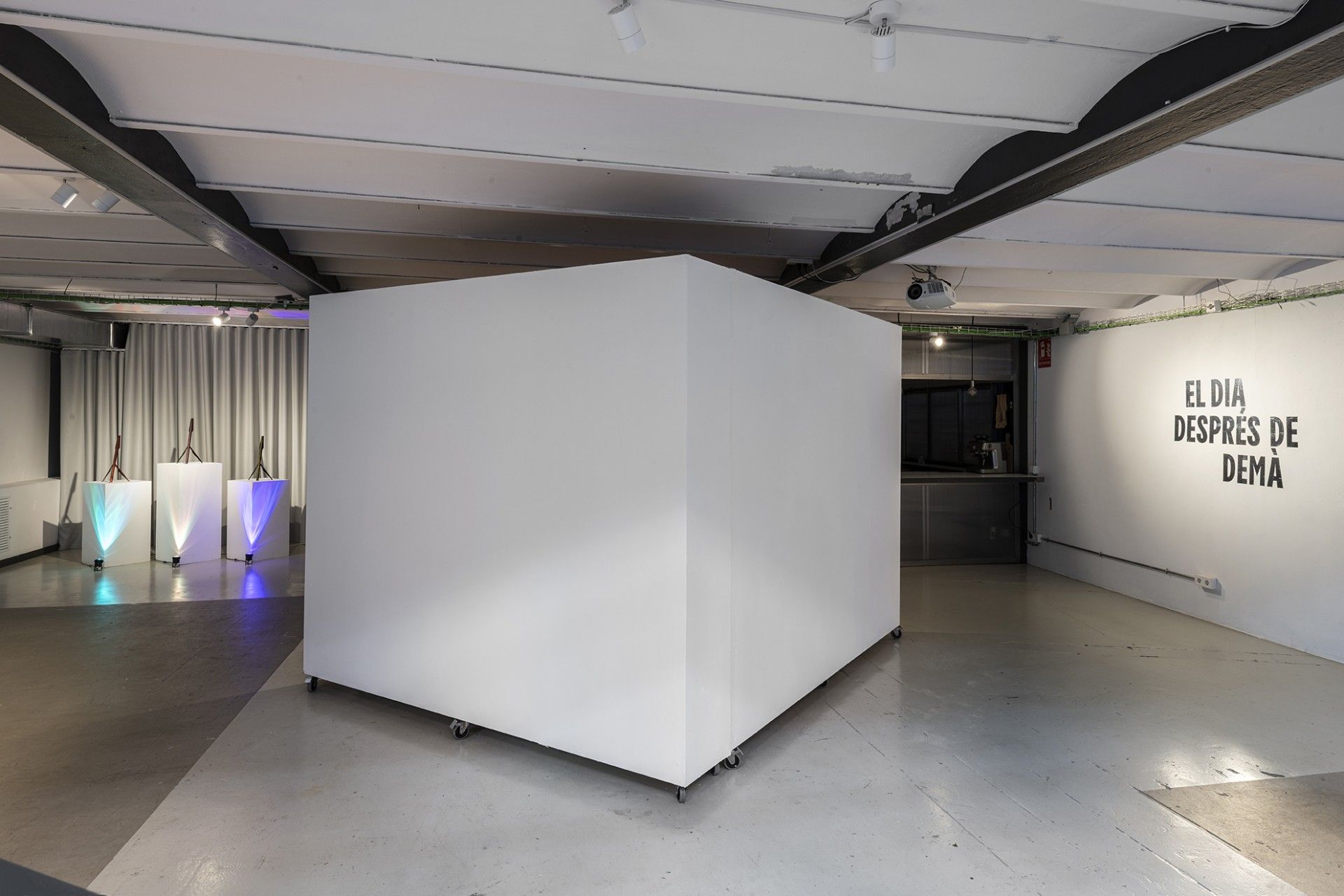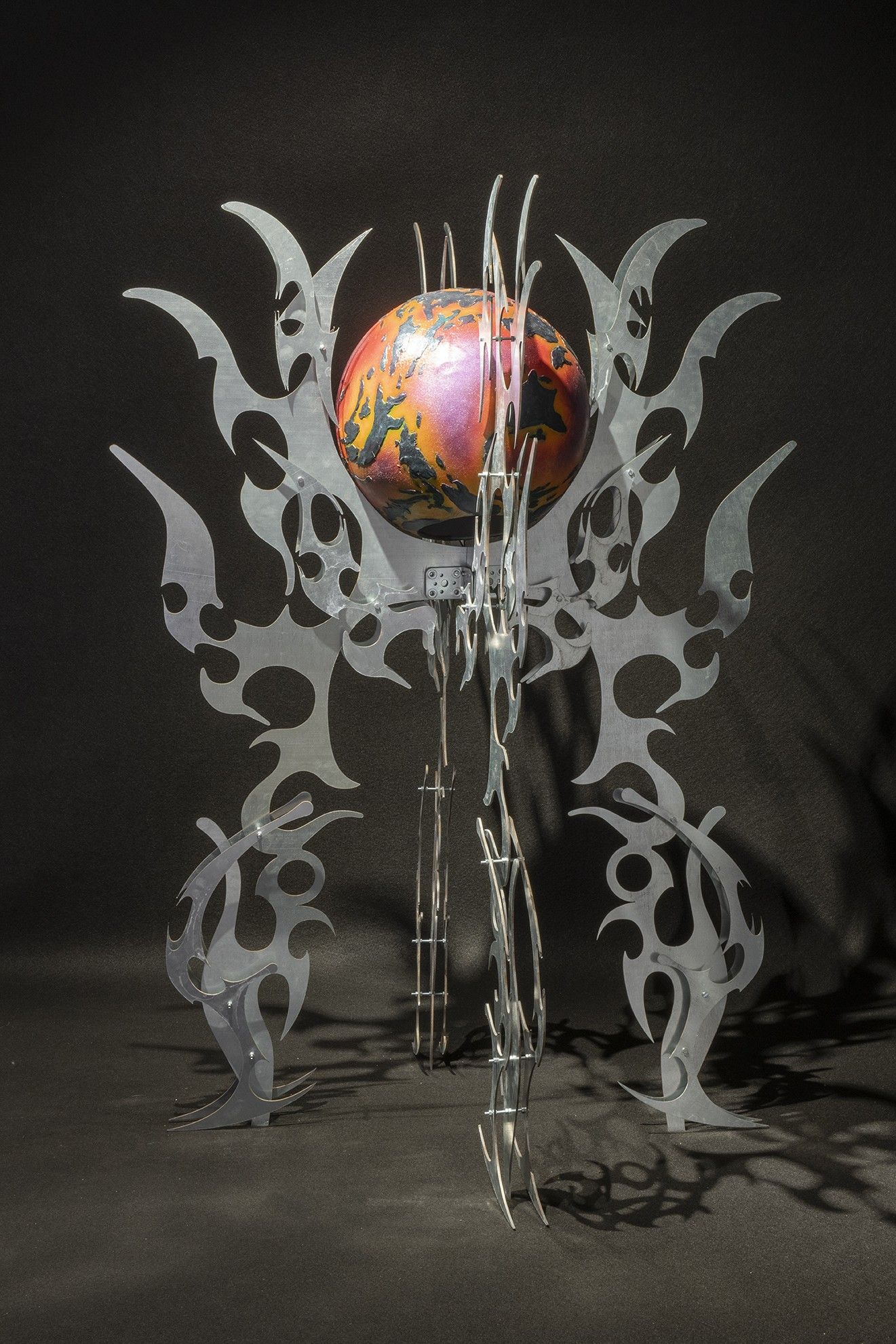The Day After Tomorrow

In one of the iconic scenes in the movie "eXistenZ" the main character, Allegra Geller (played by Jennifer Jason Leigh), inserts a virtual reality device into her own body. The device connects to her nervous system and transports her to an alternate reality where everything appears to be real, but where nothing is as it seems. In this scene, David Cronenberg explores how technology can alter human perception and create a completely new and different reality. He also suggests that technology can be used to escape reality and immerse oneself in an alternate world that can have dangerous consequences. In addition, "eXistenZ" also features a series of disturbing and grotesque images that suggest the fusion between technology and the human body. Cronenberg uses these images to explore themes such as identity and the nature of reality, as well as to examine how technology can be used to alter and transform the human body. "The Day After Tomorrow" is an exhibition that brings together four contemporary artists whose works speculate on the future and its possible consequences. Through installations, sculptures and video art, themes such as nature, technology, identity and ethics are explored in a changing and increasingly uncertain world. This exhibition, which transports the visitor to a dystopian future, takes the form of a prop of artifacts that refers, like its name, to a science fiction film. The artists, all from the same generation, have in common this vision of the future and where we can go as a society. The gallery space as a museum of the evolution of the species, a zoology museum and at the same time a laboratory of experimental science in which ethics and technology are questioned at the same time. Ovidi Benet's piece, "Bestioletes", invites us to look at the world through the eyes of insects, small and seemingly insignificant creatures that take on a new dimension in his work. With a meticulous technique, the artist creates a series of creatures that transport us to a microscopic universe full of color and texture. Through this work, the artist invites us to contemplate the beauty and complexity of nature, and to reflect on our relationship with the natural world. Mit Borrás' audiovisual installation, "Shaman", is an enigmatic work that takes us to a dystopian future in which technology and nature merge in a minimalist altar. With references to anthropology and engineering, Borrás creates a mystical object that makes us question our dependence on technology and the impact it has on the environment. At the same time, "Shaman" is a tribute to human creativity and the transformative potential of technology that invites the viewer to reflect on the relationship of human beings with technology and progress, as well as the ethical and social implications of these advances. Pablo Durango's work, "Cyberia", is an installation that immerses us in a post-apocalyptic world in which official history has been rewritten. Through a series of objects and sculptural pieces, Durango speaks of the failure of the dominant historical narrative and proposes a new way of understanding identity and gender in a world that is constantly reinventing itself. With references to science fiction and archeology, "Cyberia" is a complex and provocative work that challenges our preconceived ideas. Finally, Joel Blanco presents "Sweet Harmony", a work that explores the limits of creation and human evolution. The installation is composed of three sculptural pieces that represent the creations of a genetic engineer who pushes the limits of the development of the mutation of his own DNA to create new creatures. Descendants of their own creator, these beings that do not feel, take impossible forms. "Sweet Harmony" is a critique of the risks of genetic research and proposes a future where we can coexist with beings without consciousness that make up our closest companion in life. The play is a reflection on the relationship between human beings and evolution, as well as on the ethical and moral limits of genetic engineering and its impact on society. "The Day After Tomorrow" is an exhibition that evokes the critical and visionary outlook that takes us back to the films of John Frankenheimer (La isla del doctor Moreau) but also to the dystopian vision of more commercial cinema. Through the artists' works, the relationship between science and human evolution is addressed, presenting new forms of life that question the ethical and moral limits of science. This visual experience invites us to reflect on our future as a species and the need to take responsible action to ensure a sustainable and equitable future for all life forms. In this sense, "The Day After Tomorrow" becomes a reflection on the challenges and dilemmas facing humanity in its relationship with technology and nature. Text generated with artificial intelligence guided by a human.



Available works

Harmony (Sweet Harmony series) Joel Blanco
Harmony (Sweet Harmony series) Acrylic resin, fiberglass, acrylic and oil paint + Leatherette anime costume Variable sizes One-of-a-kind piece
This work has been exhibited in the following exhibitions: The day after tomorrow

Tetubin Joel Blanco
Acrylic resin, fiberglass, acrylic paint and oil paint Variable sizes 1/5 + 2PA
This work has been exhibited in the following exhibitions: The day after tomorrow

Shaman Mit Borrás
AV, Digital. 4k Video + Installation with objects Variable sizes 1/3 + 2PA
This work has been exhibited in the following exhibitions: The day after tomorrow

Bestioletes Ovidi Benet
Enameled steel 25 x 25 x 50cm 1/5 + 2PA
This work has been exhibited in the following exhibitions: The day after tomorrow
Related exhibitions

This Fucking Name Christto & Andrew,Andrew Roberts,Aggtelek,Diego del Pozo Barriuso,Fito Conesa,Momu & No Es,Natacha Lesueur,Ovidi Benet,Pablo Durango
From March 11 to June 30, 2022

Man in the water! Ovidi Benet
From September 22 to November 24, 2023

RAVVE | Ghosts of the future Mit Borrás
From December 8 to February 2, 2024

Man in the water! Ovidi Benet
From January 19 to March 31, 2024

Mixtape Vol1 Christto & Andrew,Carlos Sáez,Antonio Fernández Alvira,Antoine et Manuel,Andrew Roberts,Aggtelek,Diego del Pozo Barriuso,Fito Conesa,Michael Roy,Mit Borrás,Momu & No Es,Natacha Lesueur,Ovidi Benet,Vicky Uslé,Octavi Serra,Sarah & Charles,Carmen Ortíz Blanco,Pablo Durango
From September 15 to November 25, 2022

Una Cruzada de Pasiones Ovidi Benet, Pepa Salazar,Ángeles Marco,Niño de Elche,Guillem Sarrià
From September 23 to November 26, 2021
Artist fairs

SWAB Barcelona 2021 Aggtelek,Mit Borrás,Paco Chanivet, Claudia Dyboski
From October 7 to October 10, 2021

SWAB Barcelona 2023 Ovidi Benet,Octavi Serra,Sarah & Charles,Anna Moreno
From October 5 to October 8, 2023







